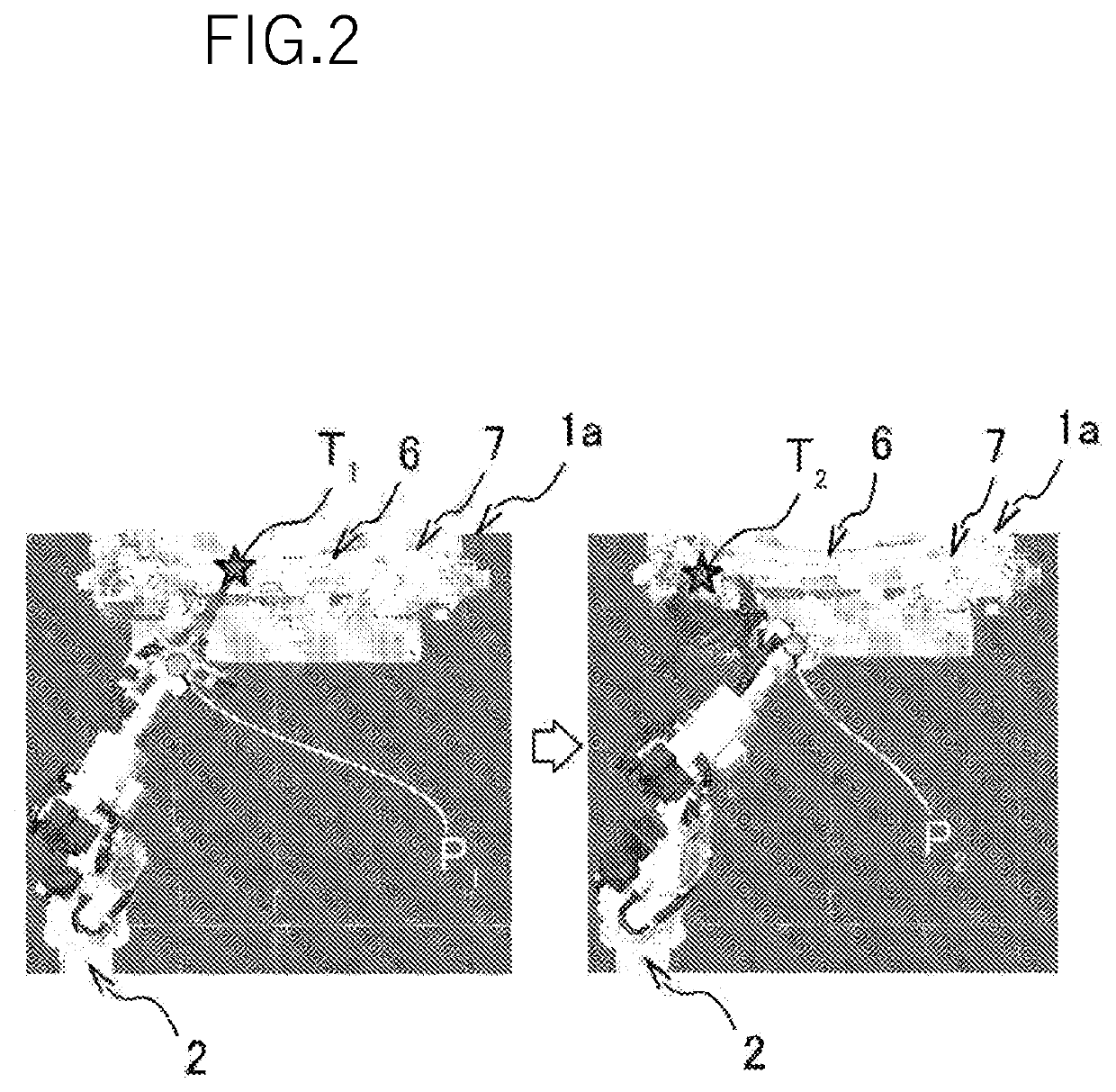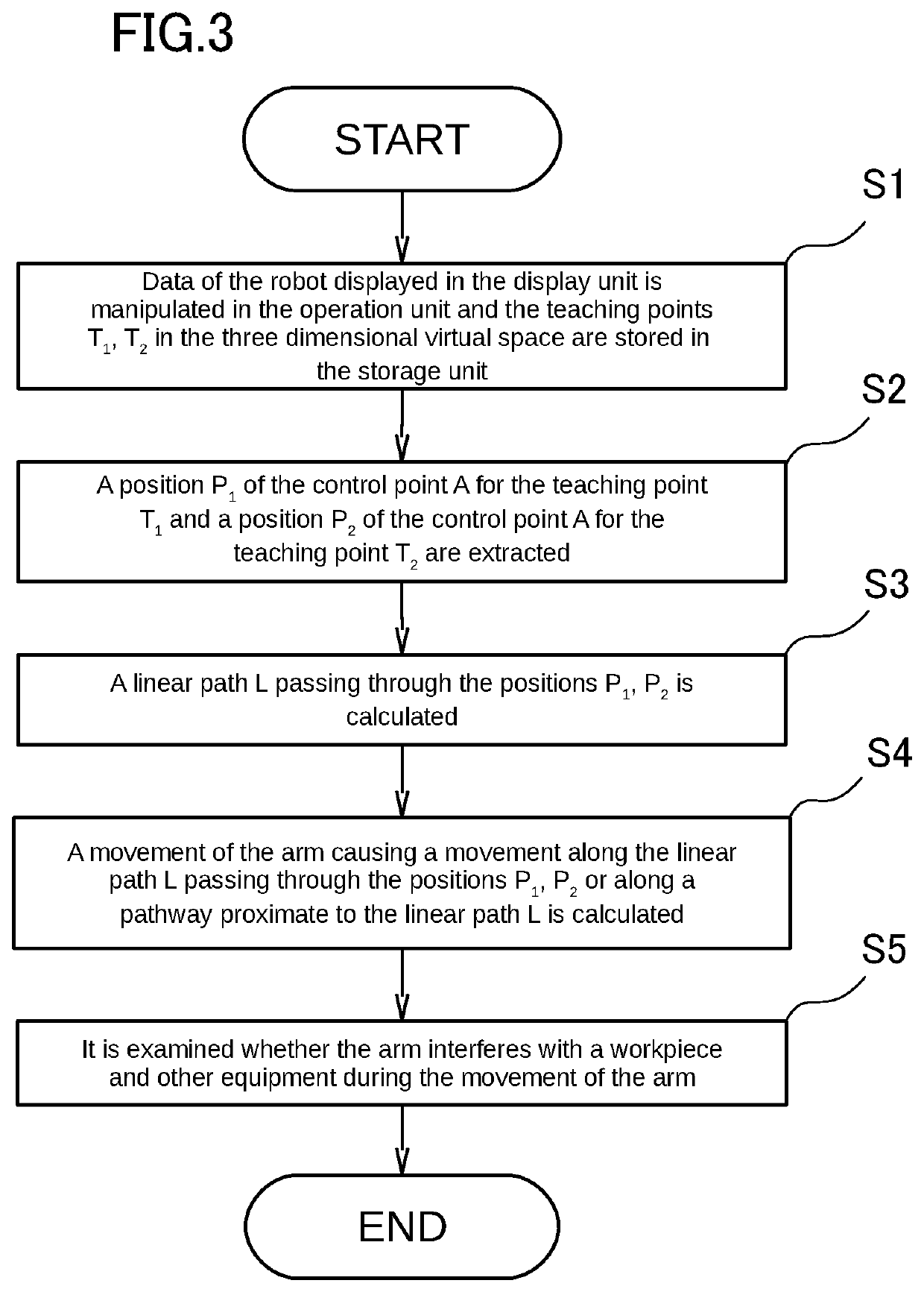Teaching data generation system for vertical multi-joint robot
a multi-joint robot and data generation technology, applied in the direction of manipulators, electric programmer control, program-controlled manipulators, etc., can solve the problems of inefficiency and inability to complete the movement of the robot within the desired cycle time, and achieve the effect of shortening the operation time of the overall arm, reducing the rotation angle, and increasing the rotation angl
- Summary
- Abstract
- Description
- Claims
- Application Information
AI Technical Summary
Benefits of technology
Problems solved by technology
Method used
Image
Examples
first embodiment
of Disclosure
[0024]FIG. 1 illustrates a teaching data generation system 1 and a vertical multi joint robot 2 according to a first embodiment of the present disclosure. The robot 2 includes an arm 3 installed on a mount floor F and a control panel 4 coupled to the arm 3. The arm 3 has a distal end portion to which a welding gun 5 (tool) of spot welding is attached.
[0025]The arm 3 has six axes and is thus multi-jointed, in which first to sixth rotary shafts C1 to C6 are provided in turn from a mount floor F side. First to sixth drive motors 3a to 3f are mounted to respective joint portions of the first to sixth rotary shafts C1 to C6. The first to sixth drive motors 3a to 3f rotate the respective joint portions about the first to sixth rotary shafts C1 to C6.
[0026]The second drive motor 3b (arm base end side motor) mounted to a joint portion W of the second rotary shaft C2 is configured to rotate the joint portion W at an angular velocity ω1.
[0027]The fifth drive motor 3e (arm distal ...
second embodiment
of Disclosure
[0057]FIG. 10 illustrates in a simplified manner modelling data of a robot 2 configured to move based on teaching data D1 generated by using a teaching data generation system 1 according to a second embodiment of the present disclosure. The second embodiment differs from the first embodiment only in positions of teaching points T1, T2 with respect to modelling data of a workpiece 6, a process of an arm movement calculation unit 1f, and part of steps of a flow diagram, while being the same as the first embodiment in connection with other aspects. Only aspects different from the first embodiment will be explained below.
[0058]The teaching data D1 that is generated in the second embodiment is a series of movements of the robot 2 that performs welding at multiple welding positions with the robot 2 changing a pose of a welding gun 5 from one side of a workpiece 6 toward the other side, wherein the workpiece 6 is vertically symmetrical on the page of FIG. 10.
[0059]An arm movem...
PUM
 Login to View More
Login to View More Abstract
Description
Claims
Application Information
 Login to View More
Login to View More - R&D
- Intellectual Property
- Life Sciences
- Materials
- Tech Scout
- Unparalleled Data Quality
- Higher Quality Content
- 60% Fewer Hallucinations
Browse by: Latest US Patents, China's latest patents, Technical Efficacy Thesaurus, Application Domain, Technology Topic, Popular Technical Reports.
© 2025 PatSnap. All rights reserved.Legal|Privacy policy|Modern Slavery Act Transparency Statement|Sitemap|About US| Contact US: help@patsnap.com



